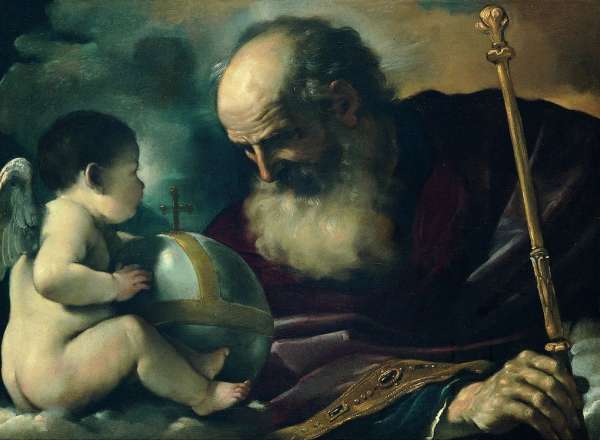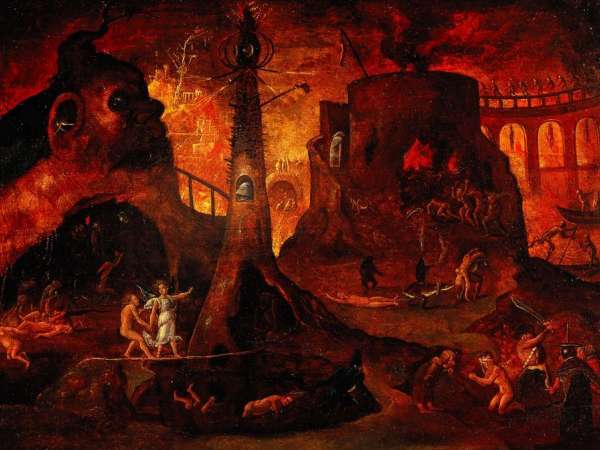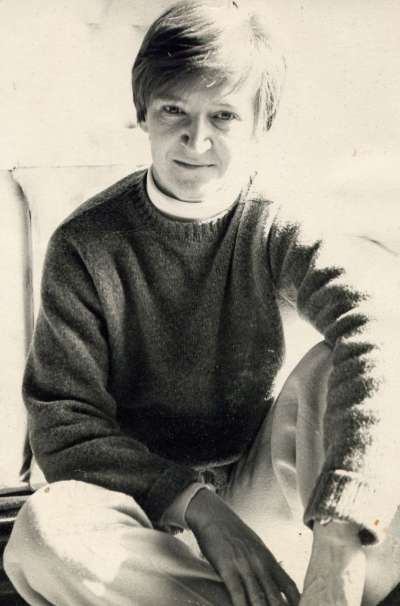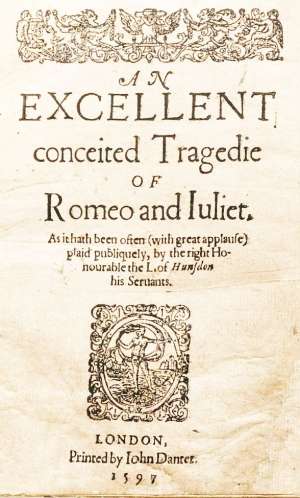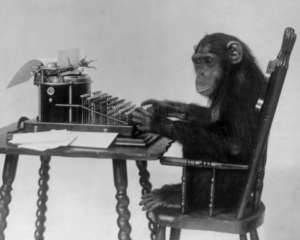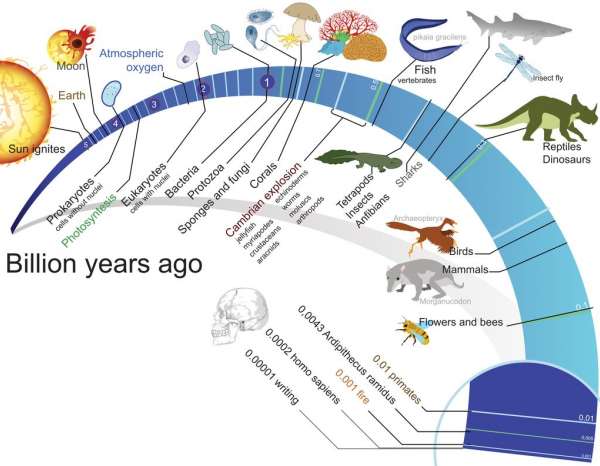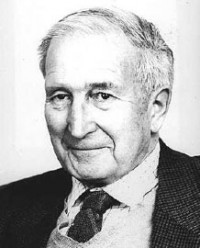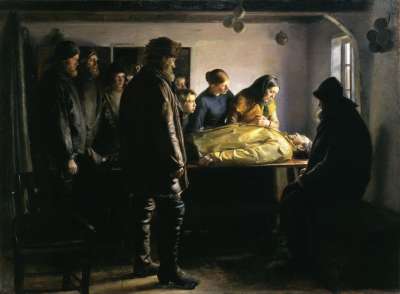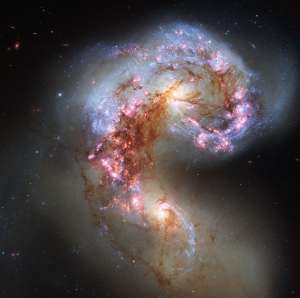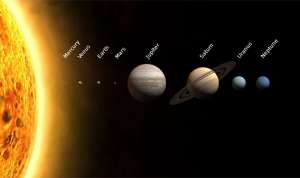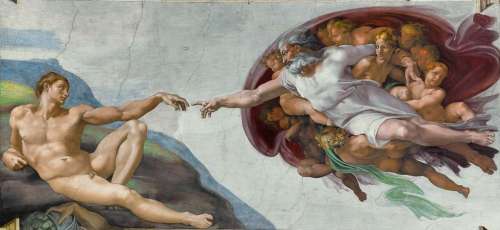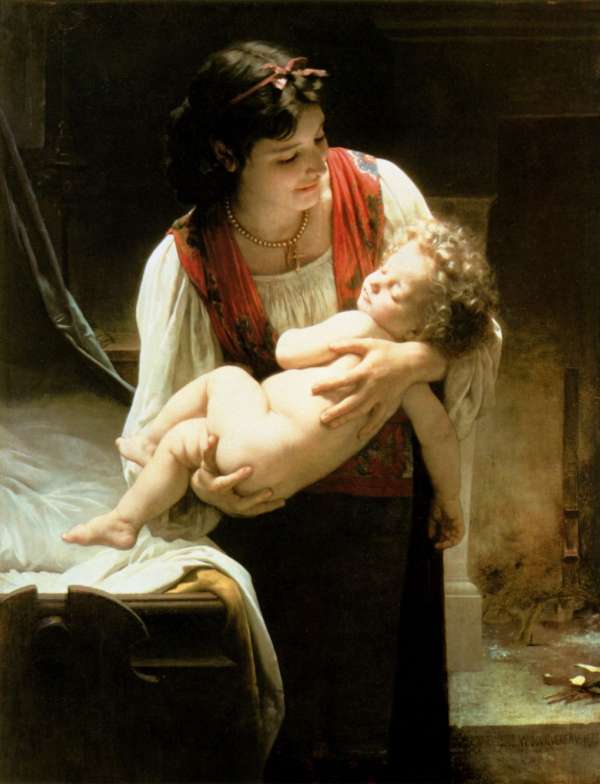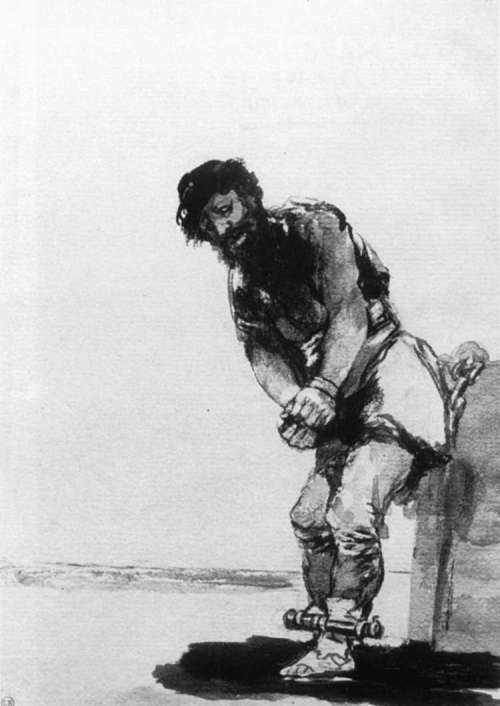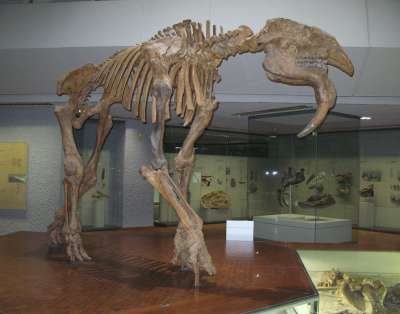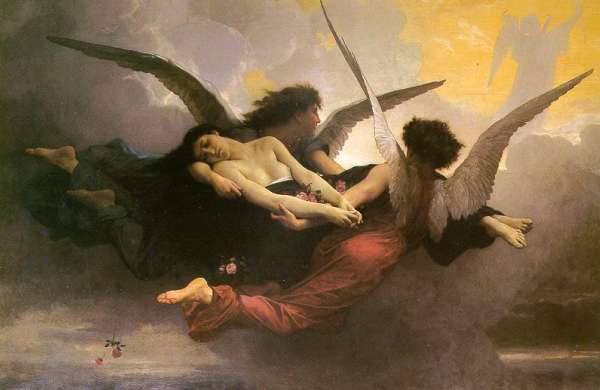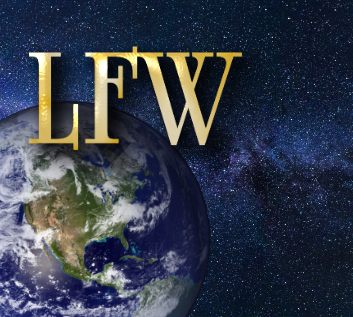Is There a God and What is God Like?~ Exploring the evidence of love
Feb 9, 2019  Click on images to see larger version. Is it non-intellectual and foolish to believe that God exists? Is there any evidence in the world around us that will demonstrate that God exists and also show us what God is like?
Moments like these are both common and ineffable. Is there any person in the entire world who has never felt even one moment of love, who has never felt even one moment of joy because of beauty? I do not believe there is. Lives of tragedy, captivity, hostility, or pain may grind down our perception of love and beauty. Lives of busyness may distract us from the subtleties of life. But at some point we all have experienced at least a fleeting encounter with a pure and transcendent moment of beauty, of kindness, and of love. I submit that God is the author of that love and beauty—that God not only created all of the beauty that we perceive in the universe, but by God’s very nature inhabits the beauty and love that we see all around us. I There are many reasons for people to not believe in God or dismiss the relevance of God. Some reject the notion of God because God has been presented and represented by various religious peoples as a God who is unforgiving, harsh, cruel, and even hateful. Some have rejected God because of personal pain in their lives, thinking that since God did not prevent their tragedies, it must mean that God does not exist—or at the very least, is not worthy of regard.
So, thus the questions: is there a God and what is God like? The debate between atheists and those who believe in God has been a lengthy one. I propose a “point of order” to that debate—a question posed to those who don’t believe in God:
I ask this because it seems to me that atheism is not only an intellectual position—but an emotional one as well, as described above. This is not meant to fault the views of atheists, because it makes perfect sense to reject the idea of a cruel and malicious God who simply watches as human beings sink in and out of misery. But what if God was not cruel and malicious after all? This also doesn’t fault the ethics or qualities of goodness that are present in many humans who espouse atheism, or other religions or thought systems that don’t include the idea of an intelligent creator. There are many kind and loving people who don’t believe in God, and there are many malformed and cruel humans who have very strong beliefs in their versions of God. This is simply an inquiry into the existence and character of God. I use the word “God” for convenience, to describe “the Intelligent Creator of all life.” With those who believe in God, both monotheists and polytheists, we see a large variety of opinions about “what God is like.” Some present God as kind and loving and parental, while others believe that God is a harsh and exacting lord who views humans as servants. Some believe that God is male, while others view God as female, or both male and female. I do not believe it is useful to debate doctrine or personal beliefs. Humans are stubborn creatures, and don’t easily change their views until they are ready to do so. That readiness is often sparked by some level of dissatisfaction with their current view of life, whether atheistic or religious. Sometimes, their dissatisfaction stems from a feeling of stultification within their current creed, or disillusionment with the practitioners of their religion. For whatever reason, we change our beliefs when we wish to. Still, even though we all may currently be living within what Dr. Deepak Chopra calls “boundaries of belief,” is it not valuable—or at least intellectually and spiritually interesting—to open our horizons to discussions of what might be true about God and the universe? I find the following verse from Romans 1:20 inescapably logical. Saint Paul wrote:
For decades, I’ve been exploring the fascinating idea that the way to truly understand what God is like is to observe the universe of created beings and then to extrapolate God’s nature based on those observations. In so doing, one also gains an ever-clearer affirmation that the existence of the universe did indeed require an Intelligent Creator. This type of examination requires objectivity and the putting aside of emotional blocks about God, as well as an openness to examine dogmas with critical thought. In other words, our beliefs and faith that “my doctrine is true because it was written that way” may not hold water if certain dogmas are looked at with an open mind—and that includes atheism, which is also a dogma. The artist-creation methodology of discovering information about a creator is best done comprehensively. One could point to a painting by an artist that is dark and dreary and conclude that the painter is constantly depressed, but doing so would not necessarily be accurate, f
To me, it employs the power of common sense to cut through all of the stubborn insistence that the universe was a random accident that began from nothing. It must be stated that when a person refuses to give credence to common sense, it raises the possibility that such refusal is generated by emotional motivations. If we look at a fine, Swiss watch and state that it came into being randomly, without human intervention, most people would raise an eyebrow and say, “Huh?” The same could be said for the play Romeo and Juliet, because not even monkeys pounding on typewriter keys could reproduce that elegant masterpiece. One could spend days listing the creations of humans that obviously required human thought and action to come into being, including smart phones, computers, movies, automobiles, aircraft, and . . . you get the idea. And yet, not one human creation, however mind-bogglingly intricate and amazing it may be, contains the invisible power of life itself.
In the 2014 book Miracles by Eric Metaxas, the author writes:
Just because we can’t measure and weigh and examine an intelligent creator of the universe is no reason at all to reject the possibility of one. To me, it makes much more sense to examine the evidence of life in the universe and ask the appropriate, logical questions that follow. Is it more likely that the universe was created by an intelligent source, or less likely? Using all of the above examples, it’s clear that it’s more likely, and thus—even though that creator is hard to pin down, it’s a valid occupation to research what the creator is like. In fact, I believe it should be a priority for all humans to devote significant amounts of time to the examination of the cause and purpose of life and the universe. We all will die one day. Isn’t it worth a bit of research to find out why the heck we were born? Even though many—if not all —humans experience various degrees of pain, suffering, and tragedy in their lives, I believe that the universe on the whole presents a different picture of life—a tapestry of love and beauty that is woven into every level and type of life and matter and energy.
Putting aside for a moment the pain that has been caused by the human freedom to be selfish, is it not true that the majesty and beauty of a universe that has been designed to support our lives is something to wonder at? Isn’t it something that causes us to stop for a moment in our busyness and ask if there was a motivation of love behind the almost infinite volume of details of the universe, all working together for each of us? It is not at all trivial that the moving parts of the universe, from atoms to planets and everything in between: chipmunks and butterflies, water and air, and the way our human bodies function, all operate in harmony to create our lives and environment in a way that ultimately gives us joy. It is not trivial at all. The beauty and efficacy of the universe reflect a love that to me is overwhelming in its constancy and commitment. If one posits that the universe was created by an Intelligent Source, one must—after a thorough examination—conclude that that Source loves human beings. Then, what about the suffering caused by human freedom? Why would God allow that? The simple, non-doctrinal answer is that human freedom allows humans to love and to create. Yes, we are free to be evil, but we are also free to be gloriously heroic, kind, loving, and good. Real love between human beings created with freedom is a reflection of the very same love that was and is being expressed to us—given to us—by a free and intelligent creator. Our freedom allows our love to match the love of the Creator. Thus, the possibility of evil is simply the price that has to be paid to allow creative love to grow in the human heart.
But… we can know, most assuredly, that God is the source of every good thing that we’ve ever encountered, every beautiful human emotion, every delightful musical composition, every sunset, and This means that the evils in human life that we all abhor are equally abhorrent to the Creator of Love. It is common sense, rooted in the wisdom of each of our souls, to know that God is saddened by human evil, and wants every person, without exception, to mature into the wonderful, magnificent human being that each of us were created to be. This also means that God is supremely egalitarian, because every human soul is a uniquely created part of God and is thus intimately connected to God in a personal and private way. Each human is a flowering of one aspect of God’s creativity. A poet who has written a hundred poems considers each poem unique, and has a special love for each of them. Every human is an incarnation and wellspring of one unique part of God’s infinite personality. Looking at the human race, one could say that God is multi-colored, birthing every race and every person, each as beautiful as the others. If it’s true for fields of flowers, how can it not be true for us? Some have felt that God is distant, like a master relating to servants, only pleased when the servants perform their tasks without mistakes. Yet, we can plainly see that the model of the human family, with a father, a mother, and children, is very different from the master-servant pattern. Good mothers and good fathers (and there have been countless examples of each) love their children with a depth and width that is priceless—a love so great that they would die for their children—a love so profound that their hearts break if their children experience pain. Who created that model of both masculine and feminine love? Who created the model of the love between parents and children, husbands and wives, and brothers and sisters? Common sense will say that God did, and thus, one can extrapolate something that is not generally considered—that God is indeed, as the creator of both male and female, a God who is both male and female.
Compassionate and loving parents would never say, “Nope. Too late. Burn forever.” Note that “forever” is longer than ten million years or some other very long span of time. No crime would fit that punishment, especially if the perpetrator had repented and changed and evolved into a better person. Such eternal condemnation is monstrously unthinkable. If good human parents would not do that, then why would God, as the creator of compassionate love, condemn people to hell forever? I submit that God would never do that, which means that the doctrine of eternal hell is simply incorrect. The exploration of what God is like is endless, in a fascinating and good way. There will always be more to discover. However, I believe that the evidence of love and beauty in the universe clearly demonstrates that God’s mind and heart are completely focused on living with us, loving with us, and helping us find the way to resonate and harmonize with the ever-creative love that God continuously seeks to express. Image Credits Photo of Viggo the Cat, by Peter Falkenberg Brown Photo of the Crescent Beach Meadow, by Peter Falkenberg Brown Image of Atom by Gerd Altmann, Public Domain Painting of “God the Father and Angel,” 1620 by Guercino (Giovan Francesco Barbieri), Public Domain Painting of “An Angel Leading a Soul into Hell,” 16th Century by a follower of Hieronymus Bosch, Public Domain Wellcome Library, London. Wellcome Images Photo of Polly Kapteyn Brown, circa 1970, photographer unknown Photo of Shark, Fallows C, Gallagher AJ, Hammerschlag N (2013) Published in a Public Library of Science journal., CC BY 2.5 Photo of a 16 week old Kooikerhondje puppy, 2017 by Harriet Bedell-Pearce, CC BY-SA 4.0 Photo of a Carl F. Bucherer manufactured watch movement, 2016 by Carl F. Bucherer, CC BY-SA 2.0 Photo of Cover of Play: Romeo and Juliet, Public Domain Painting of the famous balcony scene from Romeo and Juliet, 1884 Frank Dicksee (1853–1928), Public Domain Photo of a chimpanzee seated at a typewriter, circa 1906 New York Zoological Society, Public Domain Photo of LG G6, LG전자, CC BY 2.0 Photo of Honda NSX, User:Ed g2s, CC BY-SA 3.0 Photo of Air France Concorde, 2003, by Alexander Jonsson GNU Free Documentation License, Version 1.2 Photo of Laptop by AVADirect Custom Computers, 2015, Cmccarthy8 Creative Commons Attribution-Share Alike 4.0 International Photo of neon theatre marquee, 2016, Jedi94 GNU Free Documentation License, Version 1.2 Video of Flamingos in the zoo of Wuppertal, 2013, by Frank Vincentz GNU Free Documentation License, Version 1.2 Image of Timeline showing different events in the evolution of life 2012, LadyofHats, Creative Commons CC0 1.0 Universal Public Domain Dedication Photo of Antony Flew, Public Domain Image of Human DNA, double helix shape, 2016 by Pixabay, Creative Commons CC0 1.0 Universal Public Domain Dedication Painting of “Never Morning Wore to Evening but Some Heart Did Break,” 1894 by Walter Langley (1852–1922), w1524 x h1220 mm, Public Domain Painting of “The drowned fisherman,” 1896 by Michael Peter Ancher, 289 × 212.5 cm, (Without frame) Statens Museum for Kunst, Public Domain Photo of the Antennae Galaxies, 2013 The NASA/ESA Hubble Space Telescope, ESA/Hubble & NASA Creative Commons Attribution 4.0 International Photo of Chipmunk (Tamias striatus) taken at Garret Mountain, West Paterson, NJ Photographer: Magnus Manske Creative Commons Attribution-Share Alike 2.0 Generic Photo of Anatolian Shepherd guarding his flock, 2012 by Sirswindon GNU Free Documentation License, Version 1.2 Photo of A dramatic sunset, 2005 Fir0002 at en.wikipedia GNU Free Documentation License, Version 1.2 Image of positions and names of planets in the Solar System, 2013, by WP Creative Commons Attribution-Share Alike 3.0 Unported Photo of Contemporary ballet, 2005, by Jeff from denver, US Creative Commons Attribution-Share Alike 2.0 Generic Painting of “The Creation of Adam,” circa 1511 by Michelangelo di Lodovico Buonarroti Simoni, Public Domain Photo of Giraffa camelopardalis reticulata, 2007 Brookenovak, Creative Commons Attribution 2.0 Generic Photo of Flowers (Blooms53), 2013 by Korona Lacasse, Creative Commons Attribution 2.0 Generic Photo of A baby wearing many items of winter clothing, 2007 by Andrew Vargas from Clovis, United States Creative Commons Attribution 2.0 Generic Painting of “Berceuse (Le coucher)” [Lullaby (Bedtime)], 1873 by William-Adolphe Bouguereau Oil on canvas, 112 x 86.5 cm (3 ft. 8 in. x 2 ft. 10 in.) Image courtesy of the Art Renewal Center www.artrenewalcenter.org Painting of “Chained Prisoner,” between 1806 and 1812 by Francisco de Goya, Indian ink wash Height: 218 mm (8.58 in). Width: 151 mm (5.94 in), Public Domain Photo of Deinotherium (German: Hauerelefant), 2008 Museum am Löwentor, Stuttgart, by Ra'ike GNU Free Documentation License, Version 1.2 Painting of “A Soul Carried to Heaven” by William-Adolphe Bouguereau Public Domain Most Images from Wikimedia Commons Peter Falkenberg Brown is passionate about writing, publishing, public speaking and film. He hopes that someday he can live up to one of his favorite mottos: “Expressing God’s kind and compassionate love in all directions, every second of every day, creates an infinitely expanding sphere of heart.”
(Comments are moderated and must be approved.) “The Epiphany of Zebediah Clump”
Watch our first film right here. |








